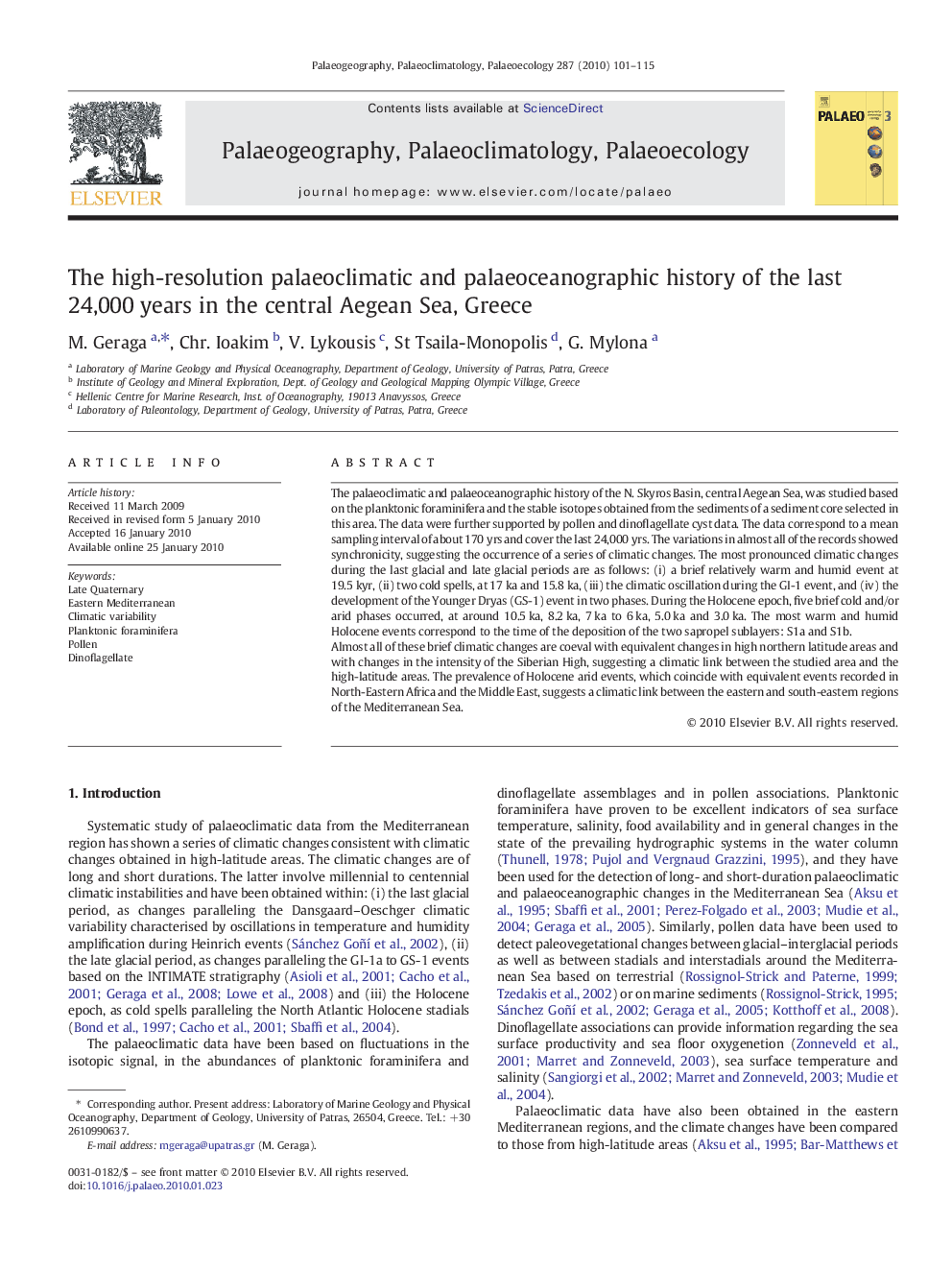| Article ID | Journal | Published Year | Pages | File Type |
|---|---|---|---|---|
| 4467838 | Palaeogeography, Palaeoclimatology, Palaeoecology | 2010 | 15 Pages |
The palaeoclimatic and palaeoceanographic history of the N. Skyros Basin, central Aegean Sea, was studied based on the planktonic foraminifera and the stable isotopes obtained from the sediments of a sediment core selected in this area. The data were further supported by pollen and dinoflagellate cyst data. The data correspond to a mean sampling interval of about 170 yrs and cover the last 24,000 yrs. The variations in almost all of the records showed synchronicity, suggesting the occurrence of a series of climatic changes. The most pronounced climatic changes during the last glacial and late glacial periods are as follows: (i) a brief relatively warm and humid event at 19.5 kyr, (ii) two cold spells, at 17 ka and 15.8 ka, (iii) the climatic oscillation during the GI-1 event, and (iv) the development of the Younger Dryas (GS-1) event in two phases. During the Holocene epoch, five brief cold and/or arid phases occurred, at around 10.5 ka, 8.2 ka, 7 ka to 6 ka, 5.0 ka and 3.0 ka. The most warm and humid Holocene events correspond to the time of the deposition of the two sapropel sublayers: S1a and S1b.Almost all of these brief climatic changes are coeval with equivalent changes in high northern latitude areas and with changes in the intensity of the Siberian High, suggesting a climatic link between the studied area and the high-latitude areas. The prevalence of Holocene arid events, which coincide with equivalent events recorded in North-Eastern Africa and the Middle East, suggests a climatic link between the eastern and south-eastern regions of the Mediterranean Sea.
